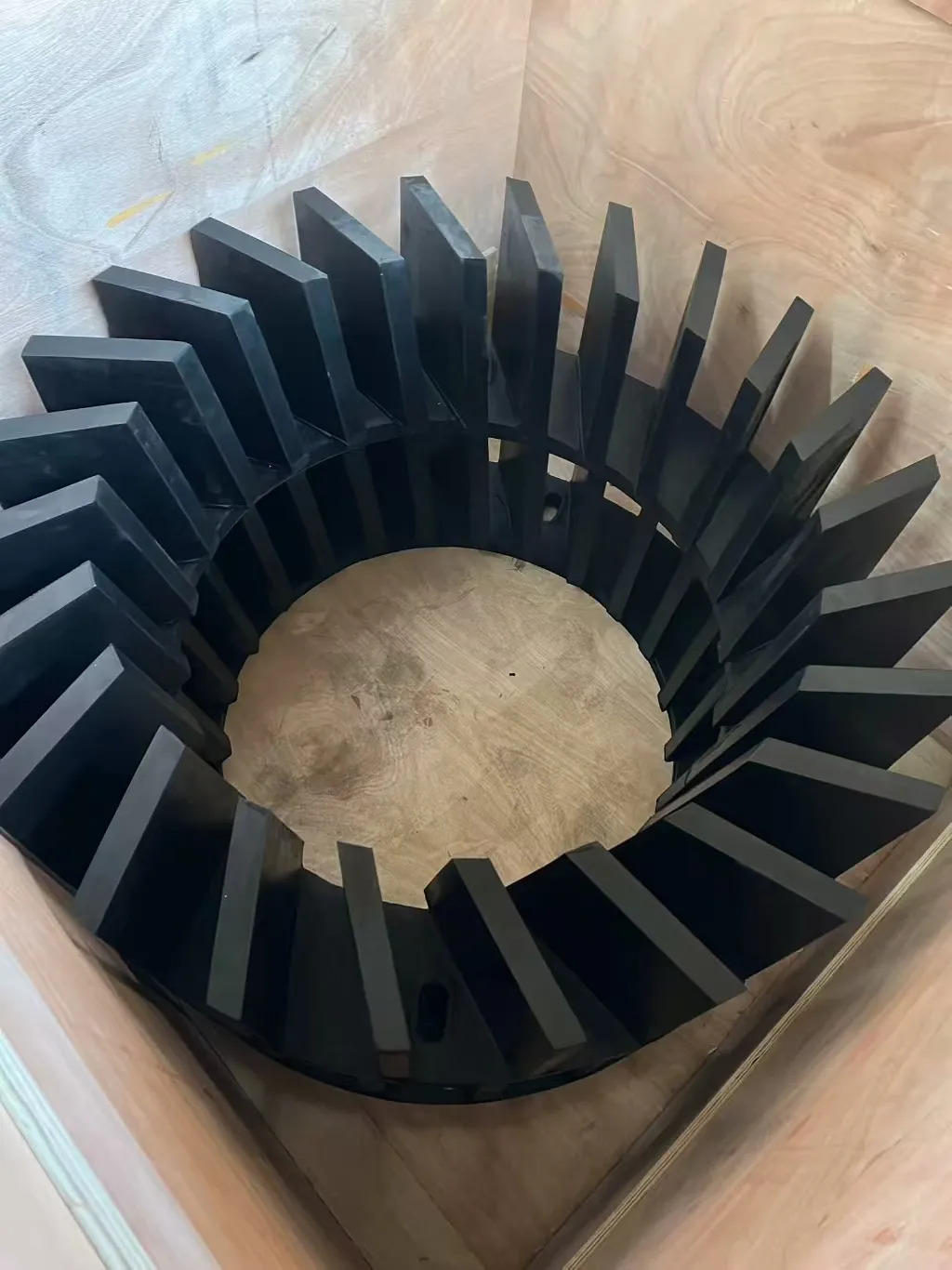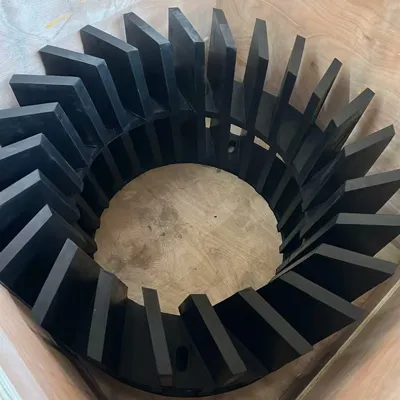The flotation machine rotor is of great significance in the mineral flotation process, with the following details:
- Structure and Composition
- Metal Framework: The metal framework of the rotor is typically made of high-quality steel, providing the necessary strength and rigidity to support the entire structure. It can withstand the mechanical stress and torque generated during the high-speed rotation of the rotor.
- Wear-resistant Rubber: The outer layer of the rotor is usually made of wear-resistant rubber, such as natural rubber, neoprene or polyurethane rubber. These rubbers have excellent wear resistance, corrosion resistance and oil resistance, which can effectively protect the metal framework from erosion by slurry and chemical substances in the flotation process.
- Working Principle
- Centrifugal Force Generation: When the flotation machine is in operation, the rotor is driven by a motor to rotate at high speed. This high-speed rotation generates a strong centrifugal force, which causes the slurry in the flotation machine to flow radially outward and form a certain flow pattern.
- Mixing and Aeration: The rotation of the rotor also promotes the mixing of the slurry and the air. It sucks in air from the outside and disperses it into the slurry in the form of small bubbles. These bubbles attach to the mineral particles, causing the mineral particles to float to the surface of the slurry, facilitating the separation of minerals.
- Performance Characteristics
- High Equilibrium Precision: The rotor has high equilibrium precision, which ensures smooth operation during high-speed rotation and reduces vibration and noise. This is beneficial to the stable operation of the flotation machine and the prolongation of its service life.
- Good Dispersion Performance: It has excellent dispersion performance, which can evenly disperse the air into the slurry to form a large number of fine bubbles, increasing the contact area between the bubbles and the mineral particles and improving the flotation efficiency.
- Corrosion and Wear Resistance: Made of wear-resistant and corrosion-resistant materials, the rotor can withstand the erosion of acid, alkali and other corrosive media and the friction of solid particles in the slurry, maintaining stable performance in harsh working environments and having a long service life.
- Applications
- Metal Mining: In the flotation of copper, molybdenum, gold, platinum and other metal ores, the flotation machine rotor plays a crucial role in separating valuable minerals from gangue minerals.
- Non-metal Mining: It is also widely used in the flotation of non-metal minerals such as fluorite, calcite and barite, helping to improve the purity and quality of non-metal minerals.




